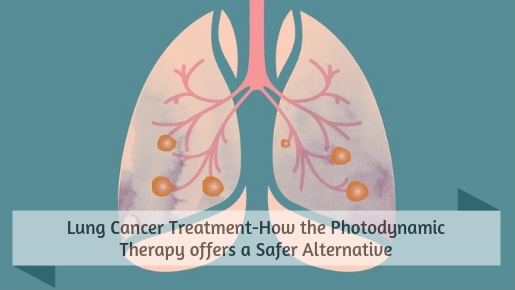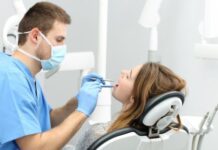Surgery, chemotherapy, immunotherapy and targeted therapy are some of the most popular lung cancer treatment modalities used by a majority of doctors or surgeons today. However, the rate of complications in such treatment methods is high. This, in turn, has led to the development of photodynamic therapy, a relatively new lung cancer treatment option used to cure lung cancer.


Lung cancer, in most cases, seems to be inoperable, especially when the tumor is located in the patient’s bronchi and trachea. Similarly, cancerous growth that has invaded other parts of the body parts including, bronchi that are almost impossible to be removed using surgical means. In cases like these, photodynamic therapy is regarded as a safe and more effective treatment technique.
In the best-case scenario, photodynamic therapy is employed as a curative method that can eliminate the emergence of cancer completely. Doctors use this therapy as a palliative lung cancer treatment technique which in turn helps the concerned patient to get relief from symptoms, however, it does not cure cancer.
Patients with lung cancer normally exhibit symptoms such as shortness of breath. Photodynamic therapy helps in relieving this symptom in a substantial manner. In a few patients, the tumor growth tends to impede the airways giving rise to several other symptoms such as coughing, breathing difficulties, pneumonia and bleeding. In such cases, photodynamic therapy can be used on the basis of tumor’s location, size and stage.
Photodynamic therapy uses a laser to kill the cancerous cells. A special type of drug is used in order to make the cells that are cancerous absolutely sensitive to this treatment leaving the healthy cells intact. This refrains the healthy cells from getting killed.
Photodynamic therapy uses three basic steps to conduct the procedure. Here are the steps:
Step 1: A drug called photofrin is inserted into the patient through his or her veins. As this drug helps the body cells extremely sensitive to light, the cancerous cells get killed leaving the healthy cells as it is.
Step 2: During the second stage, 40 to 50 hours after the injection has been given, the doctor inserts a flexible tube into the bronchia. Since this tube consists a red laser of relatively low intensity, the cancer cells are destroyed.
Step 3: Finally, after the patient is kept under the exposure of laser light, the doctor performs a bronchoscopy to eliminate dead cancer cells as well as mucus produced from the bronchi or trachea.
One can reap benefits from the lung cancer treatment techniques like photodynamic therapy only when the cancer is located in a region that can be accessed with the help of a bronchoscope. Moreover, the size of the tumor should be large enough to be able to get detected with the aid of bronchoscopy. Hence, photodynamic therapy cannot treat cancers that are situated outside the bronchial passage.
Also, this therapy involves a series of side-effects including, photosensitivity, sunburn etc. So, before you decide to get this treatment, make sure to discuss the pros and cons of the therapy in order to make an informed decision.
Explore the extensive network of organizations that help cancer patients financially, providing crucial support during challenging times.
You can also consult the best lung surgeon to get the better solution.

























